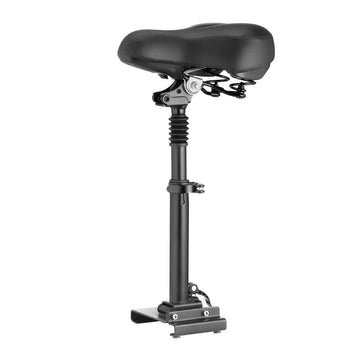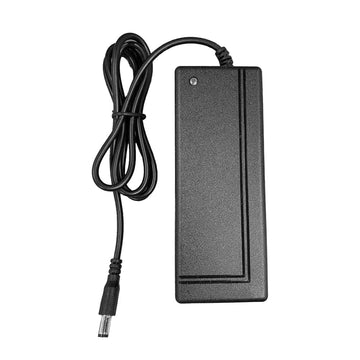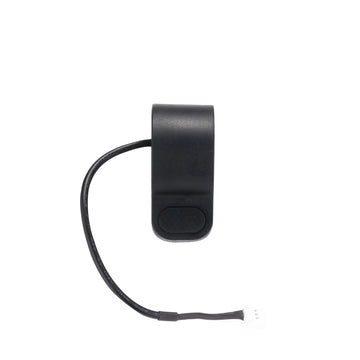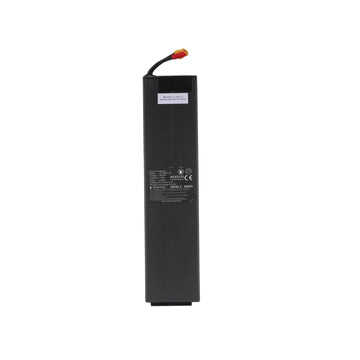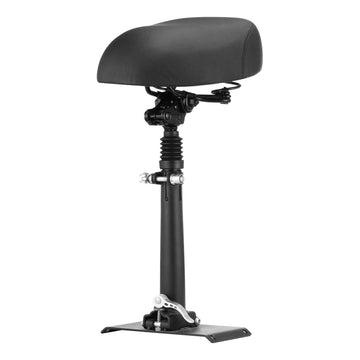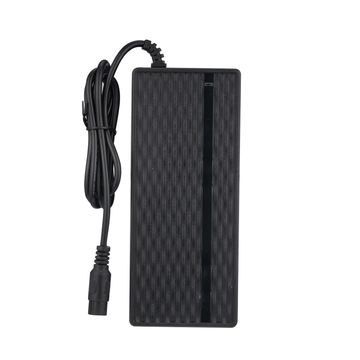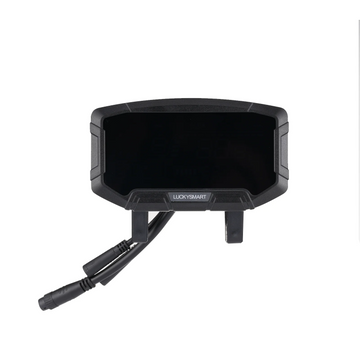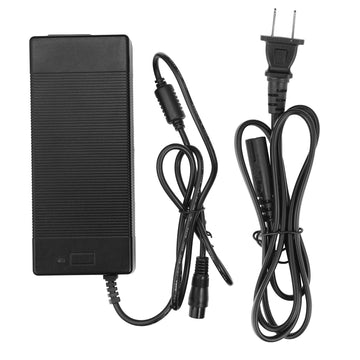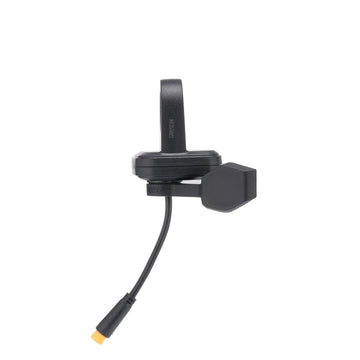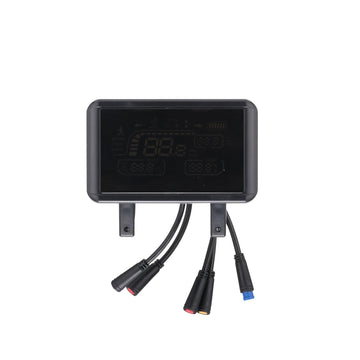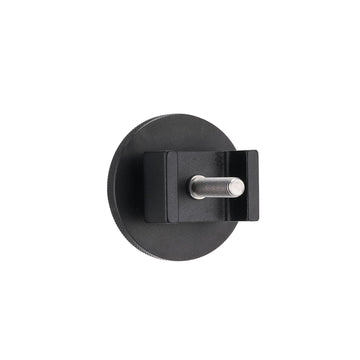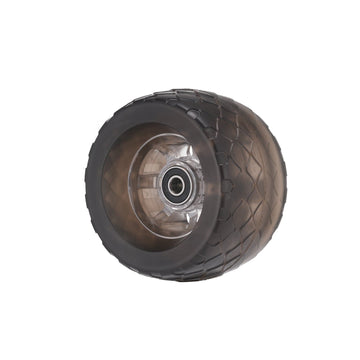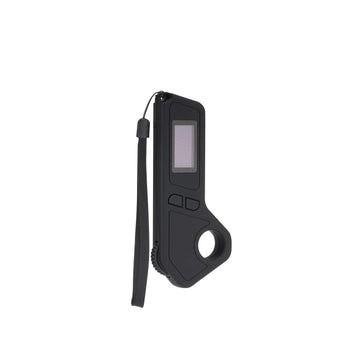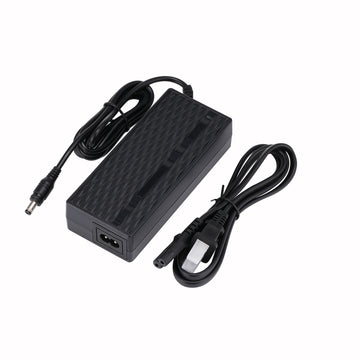Who Invented the Electric Scooter: A Brief History of Its Creation
by Jude Requiz on Jun 26, 2024

If you live in a city, you have probably seen people zipping around on electric scooters. These small vehicles have become increasingly popular in recent years due to their convenience and eco-friendliness. But have you ever wondered who invented the electric scooter?
The electric scooter has a relatively short history compared to other forms of transportation, but it has already made a significant impact. The first electric scooter was invented in the early 1900s, but it wasn't until the late 20th century that it started to dominate the market. Today, electric scooters are used by commuters, tourists, and anyone who wants to get around quickly and easily.
The invention of the electric scooter is significant because it provides an alternative to traditional gas-powered vehicles. Electric scooters are environmentally friendly, quiet, and efficient, making them a great option for urban transportation. In this article, we will explore the history of the electric scooter and answer the question of who invented it.
History of Scooters
Scooters have a long and interesting history that spans several centuries. The earliest precursor to the modern-day scooter was invented by Baron Karl von Drais de Sauerbrun in 1817. Known as the "running machine," it was a precursor to the bicycle and was powered by the rider's feet.
1867- The First Kick Scooter
In 1867, the first kick scooter was invented by C. F. W. Siebel. It was a wooden scooter with two wheels and a handlebar. The rider would push the scooter along with one foot while standing on the other.
1915 - The Autoped
In 1915, the Autoped was introduced by the Autoped Corporation. It was a gasoline-powered scooter that could reach speeds of up to 35 miles per hour. The Autoped was the first motorized scooter and paved the way for the development of electric scooters.
1974 - Honda Introduced the Kick'n Go
In 1974, Honda introduced the Kick'n Go, a kick scooter with three wheels for children. It aimed to "make skateboarding easier" and quickly gained popularity as a toy. Kick scooters like the Kick'n Go contributed to the perception of electric scooters as toys, even after their resurgence in the early 2000s.
2003 - Razor
In 2003, Razor introduced their first electric scooter. With a twist of the throttle, riders could reach speeds of up to 15 miles per hour. This marked a significant milestone in the development of electric scooters, and Razor was leading the charge in the world of personal mobility.
Today, electric scooters are becoming increasingly popular as a mode of transportation in cities around the world. They are eco-friendly, convenient, and easy to use, making them an attractive option for commuters and leisure riders alike.
Early Electric Scooter Prototypes

When it comes to the early prototypes of electric scooters, several inventors contributed to the development of this technology. In the early 1900s, inventor and physicist Elmer R. Johnson created the first electric scooter, which was a significant innovation at the time. Johnson's design eliminated the need for gas-powered vehicles for transportation.
In the following years, several inventors continued to develop and improve upon Johnson's initial design. In 1915, Autoped Corporation started mass-producing their popular gasoline-powered Autoped scooter, which is often considered the first-ever scooter. However, it wasn't until the late 20th century that electric scooters started to dominate the market.
Peugeot Introduced the S55 Scooter
In 1996, Peugeot introduced the S55 scooter, which was one of the first commercially successful electric scooters. The S55 featured a 1.2 kW motor and a range of up to 40 km on a single charge, making it a popular choice for commuters.
Another significant milestone was achieved by the American company Go-Ped with their introduction of the Go-Ped ESR750 in 2001. The ESR750's electric hub motor and portable design set a new standard for electric scooters, and it quickly became a popular choice for urban commuters.
Overall, the early designs and concepts of electric scooters were crucial in the development of this technology. Without the initial attempts and prototypes, we wouldn't have the advanced electric scooters we have today.
Who Invented the Electric Scooter?
The exact date and inventor of the electric scooter is difficult to pinpoint, but the history of electric scooters can be traced back to the 19th century:
1830s - Kirkpatrick Macmillan

Photo Credits: Wikipedia
Kirkpatrick Macmillan, a Scottish blacksmith, invented the velocipede, a pedal-driven bicycle that helped lay the groundwork for the development of scooters and bicycles.
1895 - Ogden Bolten Jr. of Ohio
Ogden Bolten Jr. of Ohio filed the first patent for an electric personal transport device, which was an electric motorcycle. This patent may have been based on an existing electric bicycle.
1913 - Arthur Hugo Cecil Gibson
Arthur Hugo Cecil Gibson designed the Autoped, a motorized scooter with a small engine between its two wheels.
1915 - Autoped Company

Photo Credits: Wikipedia
The Autoped Company of Long Island City, New York began manufacturing the Autoped, which was the first motorized scooter for adults. The original models cost $100 and had an engine mounted over the front wheel.
1919 - Granville Bradshaw
Granville Bradshaw, the chief engineer at ABC, developed the Scootamota, a seated scooter with a rear-wheel engine and a top speed of 15 mph.
1985 - Steve Patmont
Steve Patmont and his family patented the Go-Ped scooter, which marked a notable resurgence of the upright motor-powered scooter.
Impact of the Electric Scooter Invention
The invention of the electric scooter has had a significant impact on society, transportation, urban mobility, and the environment.
Here are some of how the electric scooter has influenced these areas:
1. Transportation
The electric scooter has provided a new mode of transportation for short distances that is faster and more convenient than walking. It has also helped to reduce traffic congestion by providing an alternative to cars and buses for commuting. According to a study conducted by the National Association of City Transportation Officials (NACTO), electric scooters have the potential to replace up to 30% of car trips in cities.
2. Urban Mobility
The electric scooter has improved urban mobility by providing an affordable and accessible mode of transportation to people who may not have access to a car or public transportation. It has also helped to reduce travel time and make it easier for people to get around in crowded urban areas. In addition, electric scooters have been used to provide last-mile transportation for commuters, helping them to get from their home or office to a public transportation hub.
3. Environment
The electric scooter has a lower carbon footprint than cars and buses, making it a more environmentally friendly option for transportation. According to a study conducted by the University of California, Santa Barbara, electric scooters emit 202 grams of CO2 per mile, compared to 415 grams for a car and 270 grams for a bus. In addition, electric scooters are powered by rechargeable batteries, which reduces the need for fossil fuels.
Overall, the invention of the electric scooter has had a significant impact on society and the market. It has provided a new mode of transportation that is faster, more convenient, and more environmentally friendly than traditional options. As the popularity of electric scooters continues to grow, they will likely become an even more important part of urban mobility and transportation.
Evolution of Electric Scooters
Electric scooters have come a long way since their invention in the early 1900s. From the basic design of the first electric scooter, many technological advancements and design improvements have been made over the years, leading to the modern electric scooters we see today.
One of the earliest electric scooters was invented by Elmer R. Johnson in 1915. Johnson's design was a significant innovation, as it eliminated the need for gas-powered vehicles for transportation. However, it was not until the late 20th century that electric scooters started to dominate the market.

In 2003, Razor introduced its first electric scooter, which was not just a regular scooter with a motor, but a statement. With a twist of the throttle, riders could reach speeds of up to 15 miles per hour. This electrified the world of personal mobility, and Razor was leading the charge.
Since then, electric scooters have undergone significant changes. The batteries have become more powerful, allowing for longer rides, and the motors have become more efficient, providing more speed and torque. Additionally, the design of electric scooters has become sleeker and more aerodynamic, making them more visually appealing.
Currently, electric scooters are becoming increasingly popular, especially in urban areas. They are an eco-friendly and affordable mode of transportation, making them a popular choice for commuters. The electric scooter rental market has also grown, with companies like Lime and Bird providing electric scooters for rent in many cities.
The Future of Electric Scooters
In the future, electric scooters are expected to become even more advanced and sophisticated. With the development of new battery technologies and materials, electric scooters will become more powerful, lighter, and have longer ranges. Additionally, the integration of smart technologies such as GPS and Bluetooth will make electric scooters more convenient and user-friendly.
Prominent Electric Scooter Models

When it comes to electric scooters, there are many models available on the market. Some of the most popular and innovative electric scooters are listed below.
1. Isinwheel Electric Scooter
The Isinwheel Electric Scooter is a popular model due to its sleek design and long battery life. It has a top speed of 28 mph and can travel up to 25 miles on a single charge. The scooter is also lightweight, weighing only 53 lbs, making it easy to carry around when not in use. It also features a double braking system and a bright headlight for safety.
2. Razor E300 Electric Scooter
The Razor E300 Electric Scooter is a great option for those looking for a more budget-friendly electric scooter. It has a top speed of 15 mph and can travel up to 10 miles on a single charge. The scooter also features a comfortable seat and a large deck for added stability. It can hold riders up to 220 lbs.
3. Segway Ninebot MAX Electric Scooter
The Segway Ninebot MAX Electric Scooter is a powerful model with a top speed of 18.6 mph and a range of up to 40.4 miles on a single charge. It has a sturdy frame and can hold riders up to 220 lbs. The scooter also features a regenerative braking system and a bright headlight for added safety.
4. Glion Dolly Foldable Lightweight Adult Electric Scooter
The Glion Dolly Foldable Lightweight Adult Electric Scooter is a unique model due to its foldable design. It can be easily folded and carried like a suitcase, making it perfect for commuters. It has a top speed of 15 mph and can travel up to 15 miles on a single charge. The scooter also features a durable frame and a bright headlight for safety.
Frequently Asked Questions on Who Invented the Electric Scooter
Who is credited with inventing the first electric scooter?
The first electric scooter was invented in the early 1900s by inventor and physicist Elmer R. Johnson. His design was a huge innovation, as it allowed people to travel without relying on gas-powered vehicles.
When was the electric scooter invented?
The electric scooter was first invented in the early 1900s, with Elmer R. Johnson credited as the inventor of the first electric scooter in 1915. Since then, there have been multiple inventors and iterations that have contributed to the evolution of the modern electric scooter.
Who discovered the electric scooter?
The electric scooter was discovered by Elmer R. Johnson, who invented the first electric scooter in 1915. Since then, there have been many other inventors who have contributed to the development of the electric scooter.
Who is the founder of pure electric scooter?
There is no one founder of pure electric scooters. The history of electric scooters is intricate, with multiple inventors and iterations that have contributed to the evolution of the modern electric scooter.
How was scooter discovered?
The electric scooter was discovered through the innovation and ingenuity of inventors and engineers throughout history. Elmer R. Johnson is credited as the inventor of the first electric scooter in 1915, but since then, there have been many other inventors who have contributed to the development of the electric scooter.




























